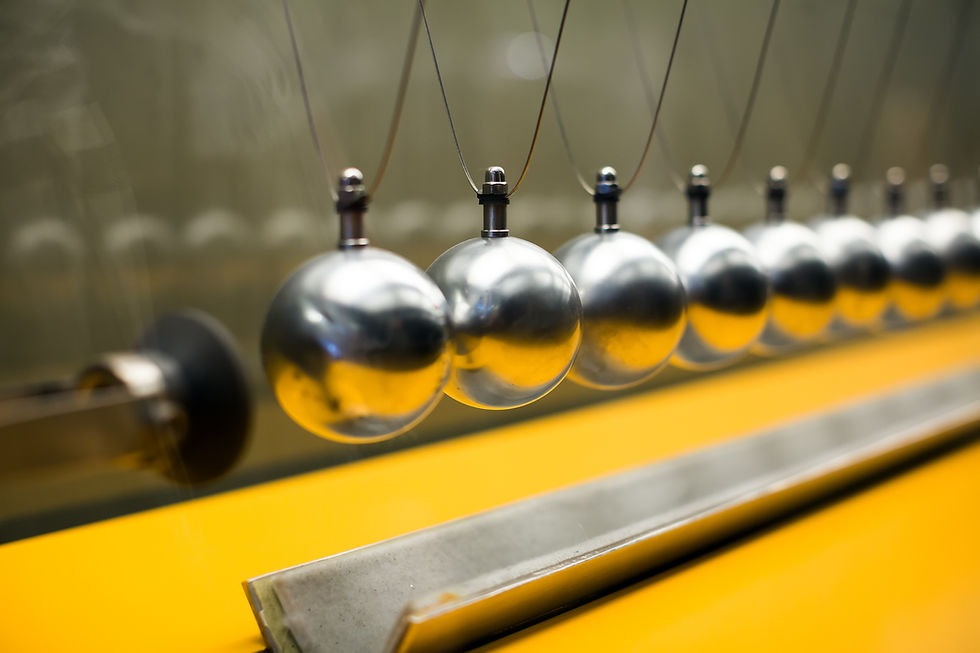The Wandering Meatloaf
- Sandy Woon
- Jun 15, 2021
- 3 min read

The gumboot chiton--a large, lumpy mollusk that creeps along the waters of the Pacific coast--pulls its reddish-brown body up and down the shoreline. It is sometimes known as “the wandering meatloaf.” But the chiton’s body hides an array of tiny but daunting teeth.
The gumboot chiton scrapes algae off ocean rocks using teeth made from the magnetic mineral magnetite. The teeth have the maximum hardness and stiffness of any known biomineral. Although magnetite is a geologic mineral commonly found in the earth’s crust, only a few animals are known to produce it, and little is known about how they are made.
Recently, a team of scientists has discovered a surprising ingredient in the chiton’s rock-hard dentition: a rare, iron-based mineral that previously had been found only in actual rocks. Tiny particles of the mineral, which are strong but lightweight, help harden the root of the mollusk’s teeth.
This discovery could help engineers design new kinds of materials, such as creating a new chiton-inspired ink for 3D printers.
A chiton feeds by sweeping its flexible, ribbonlike tongue, known as a radula, along algae-covered rocks. Its ultra-hard teeth are arrayed in rows along the soft radula. A long, hollow tube, known as the stylus, anchors each tooth to the radula. Scientists previously discovered that the tops of chiton teeth contained an iron ore called magnetite but knew less about the composition of the stylus.
“We knew that there was iron in the upper part of the tooth,” said Linus Stegbauer, a material scientist at the University of Stuttgart. “But in the root structure, we had no idea what was going on in there.”
In the new study, the researchers analyzed chiton teeth using different advanced imaging techniques, including several kinds of spectroscopy, which allow scientists to learn about a material’s chemical and physical properties by observing how they interacts with light and other kinds of electromagnetic radiation.
The stylus contained tiny particles of some kind of iron-based mineral suspended in a softer matrix. The matrix is made of chitin, the compound that makes up the exoskeletons of insects and crustaceans.
After further analysis, the researchers discovered that the mineral particles were santabarbaraite, a mineral that had never been observed in living creatures before.
“It was a whole series of surprises, and then they just kept rolling in,” said Derk Joester, a material scientist at Northwestern University.
Santabarbaraite is a hard mineral, but it contains less iron and more water than magnetite, which makes it less dense. The mineral might allow the chiton to build strong, lightweight teeth while reducing their reliance on iron.
“Iron is physiologically a rare material,” Dr. Joester said. The researchers also discovered that the santabarbaraite particles were not evenly distributed throughout the entire stylus. Instead, they were concentrated at the top, closest to the surface of the tooth, and became sparser at the bottom, where the stylus connected to the soft radula.
This pattern of distribution created a gradient, making the stylus stiffer and harder at the top and more pliable at the bottom.
The wandering meatloaf has spatial control as to where the mineral goes, if it was possible for it to pattern it this way, it means that scientists can potentially pattern it that certain way as well to create materials.
The researchers decided to try creating a new 3D printer “ink” inspired by the chiton tooth. They started with a compound similar to chitin and then added two liquids: one containing iron and one containing phosphate. Mixing the ingredients together yielded a thick paste studded with tiny particles of a mineral similar to santabarbaraite.
“And then it’s ready to be printed — you can just transfer it into your 3D printer,” Dr. Stegbauer said.
The ink hardened as it dried, but its final physical properties depended on how much iron and phosphate were added to the mix. The more that was added, the more nanoparticles formed, and the stiffer and harder the final material became. By tweaking the recipe, the researchers could create objects that were as flexible and rubbery as a squid or as stiff and hard as bone.
“It should be possible to mix the ink at a ratio that you can change immediately prior to printing,” Dr. Joester said. “And that would allow you to change the composition, the amount of nanoparticles, and therefore the strength of the material on the fly. Meaning that you can print materials where the strength changes very dramatically over relatively short distances.”
The technique might be useful in the burgeoning field of soft robotics, allowing engineers to create machines that are hard and stiff in some places and soft and pliable in others.



Comments